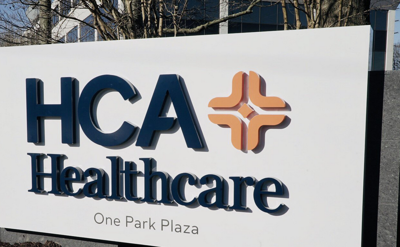In a powerful show of financial strength, HCA Healthcare Inc. announced a rise in its full-year revenue outlook following a solid performance in the latest quarter. The hospital owner and operator reported strong revenue and profit gains, driven by an increase in patient volumes and robust demand for healthcare services.
Now expecting annual revenue between $74 billion and $76 billion, HCA is positioning itself for an even more successful year, underlining its leadership in the healthcare industry.
HCA Revenue Outlook: A Positive Turn for the Healthcare Giant
The new HCA revenue outlook shows a meaningful improvement from the company’s earlier forecast. With revenues climbing higher than expected in the latest quarter, HCA’s revised projection reflects both the strong demand for its services and efficient operational performance across its network.
Previously, HCA had projected full-year revenue between $73.5 billion and $75.5 billion, but after reporting better-than-expected results, the company now believes it will end the year with stronger earnings than anticipated. This shift in guidance sends a positive signal to investors and highlights the company’s momentum going into the latter half of 2025.
Quarterly Highlights: Revenue and Profit Jump
In its latest quarterly report, HCA recorded:
- Net income of $1.58 billion, a solid increase from $1.19 billion during the same quarter last year.
- Total revenue of $17.3 billion, up from $15.9 billion year-over-year.
- Earnings per share (EPS) of $5.93, compared to $4.39 a year ago.
These results exceeded Wall Street expectations and mark one of the company’s strongest quarters in recent years. The combination of higher inpatient admissions, outpatient surgeries, and emergency room visits contributed significantly to these gains.
What’s Driving HCA’s Revenue Growth?

Several factors have played a role in boosting HCA’s revenue outlook and performance:
1. Growing Patient Volumes
HCA operates 180 hospitals and over 2,300 outpatient facilities across 20 U.S. states and the United Kingdom. With more people seeking healthcare post-pandemic and an aging population requiring more medical services, the company has seen rising patient admissions and procedure volumes.
2. Operational Efficiency
Despite inflationary pressures and rising labor costs, HCA has maintained cost efficiency through:
- Streamlined operations
- Optimized staffing and workforce planning
- Strategic use of technology and data analytics
This has allowed HCA to protect its margins and continue reinvesting in services and infrastructure.
3. Investment in Technology and Digital Health
HCA’s increased use of AI-powered diagnostics, digital patient records, and telehealth services has made it easier and faster for patients to receive treatment—helping the company stand out in a competitive healthcare market.
CEO Statement: Confidence in Continued Growth
During the earnings call, CEO Sam Hazen expressed optimism about the future. He credited the company’s focus on operational performance, workforce engagement, and patient outcomes as key drivers of success.
“We are very encouraged by the performance across our markets. Our teams continue to deliver high-quality care while responding to increasing patient demand,” Hazen said.
He also emphasized HCA’s plans to expand selectively into growth markets while strengthening its current hospital network.
Updated Guidance for Full-Year 2025
Based on the strong Q2 results, HCA updated its full-year financial guidance:
| Metric | Previous Forecast | Updated Forecast |
|---|---|---|
| Revenue | $73.5B–$75.5B | $74B–$76B |
| EPS | $18.90–$20.00 | $19.40–$20.60 |
| Adjusted EBITDA | $14.1B–$14.6B | $14.4B–$14.9B |
These updates reflect the company’s confidence in maintaining its growth trajectory through the rest of the year.
Stock Market Reaction
Following the earnings announcement and improved guidance, HCA’s stock rose by over 4% in premarket trading. Investors responded positively to the news, recognizing HCA’s ability to grow revenue and profit in a challenging economic environment.
The stock has gained nearly 15% year-to-date, outperforming many of its peers in the healthcare sector.
Challenges Still Remain
Despite the upbeat HCA revenue outlook, the company continues to navigate several challenges:
1. Labor Shortages
Like many in the healthcare sector, HCA is dealing with a tight labor market, especially in nursing and specialized medical roles. While the company has made progress in recruitment and retention, wage pressure remains a concern.
2. Rising Operating Costs
Medical supplies, pharmaceuticals, and equipment have all become more expensive, squeezing margins for many providers. HCA’s scale helps mitigate some of these costs, but the issue still looms.
3. Regulatory Scrutiny
As one of the largest hospital operators, HCA faces ongoing scrutiny from regulators over billing practices, pricing transparency, and patient care quality. The company continues to invest in compliance systems to manage this risk.
Strategic Expansion and Future Plans
HCA is actively expanding into high-growth areas through:
- New hospital construction projects in Texas and Florida
- Joint ventures with local healthcare providers and universities
- Acquisition of specialty centers, including surgical and diagnostic facilities
Additionally, HCA is investing heavily in medical education programs, partnering with schools to train the next generation of doctors, nurses, and technicians. This long-term investment will help address future labor shortages while boosting the company’s reputation as a trusted healthcare leader.
HCA’s Competitive Position in the Healthcare Sector

With over 280,000 employees and a nationwide presence, HCA is one of the most significant players in U.S. healthcare. Its ability to deliver consistent revenue growth and raise forecasts in a difficult environment highlights several competitive advantages:
- Scale and reach
- Efficient use of resources
- Strong leadership and execution
- Adaptability to digital transformation
While competitors like Tenet Healthcare and Universal Health Services are also growing, HCA’s latest quarter puts it a step ahead in terms of both performance and future outlook.
Industry Implications of HCA’s Performance
HCA’s strong quarter may signal broader trends in the healthcare industry, such as:
- A rebound in elective procedures
- Increased healthcare utilization post-pandemic
- Growing demand in urban and suburban markets
Other hospital operators are likely to benefit from similar dynamics, although few can match HCA’s scale and efficiency. HCA’s report may also lead analysts to revise their outlooks for the sector more broadly.
What This Means for Patients and Investors
For patients, a healthier HCA means more access to care, continued investment in technology, and better facilities. The company has committed to improving health outcomes while keeping care affordable and accessible.
For investors, HCA represents a solid long-term opportunity in a defensive sector. With predictable cash flow, consistent performance, and strategic vision, it continues to be a favorite among institutional investors and analysts alike.
Conclusion: HCA Revenue Outlook Shows Confidence and Strength
The updated HCA revenue outlook is more than just a financial forecast—it reflects the strength of a company that has effectively navigated economic headwinds, labor challenges, and rising costs. By focusing on operational excellence, technological innovation, and strategic expansion, HCA Healthcare continues to prove why it is a leader in the hospital industry.
As the year progresses, all eyes will be on how the company delivers in the second half of 2025. But with strong momentum and a clear roadmap ahead, the outlook for HCA looks more promising than ever.
Read Next – Charter Communications Broadband Loss Triggers Steep Sell-Off






